The advent of QR codes on headstones presents an innovative way to remember and celebrate the lives of those who have passed.
A simple scan can reveal a profound narrative through this intriguing blend of technology and tradition, encapsulating a person's life far beyond the epitaph.
In this post, we explore the impact and appliance of QR codes on headstones.
What Are QR Codes for Headstones?
QR codes for headstones, often referred to as QR codes for gravestones, are a modern way to memorialize loved ones who have passed away.
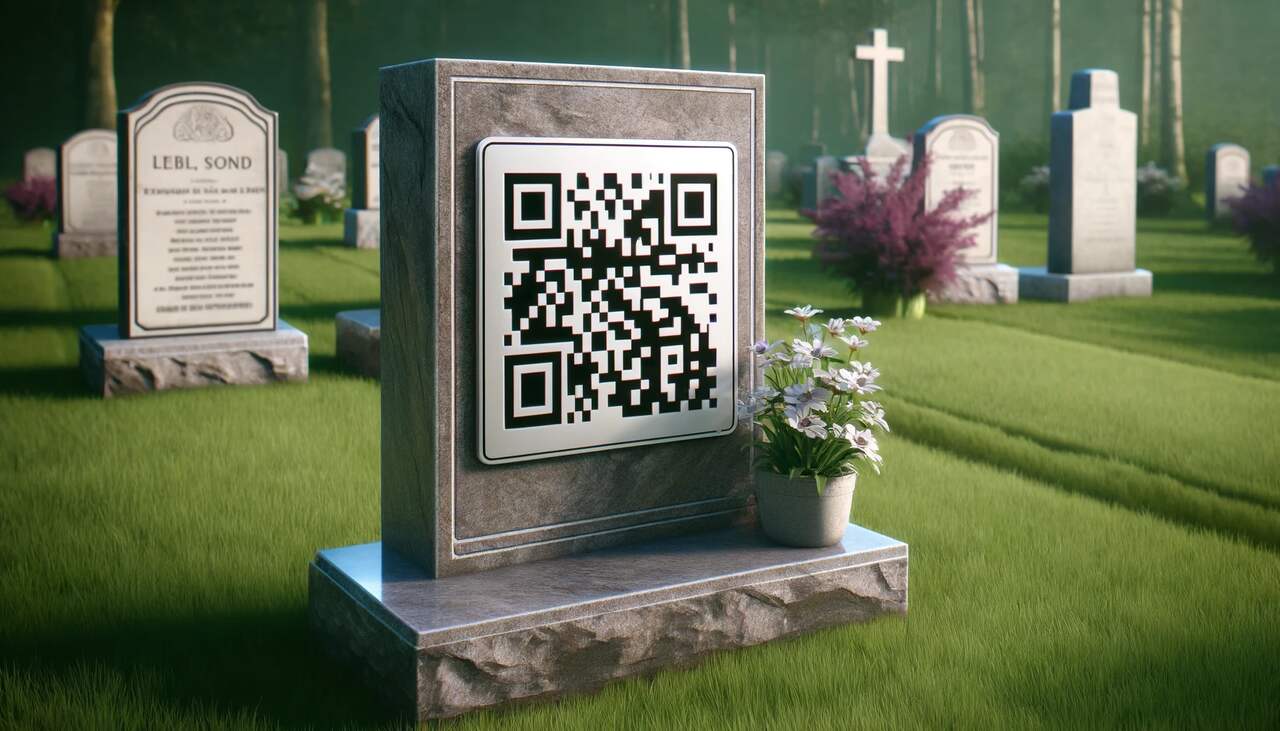
These small, scannable codes are typically attached to a gravestone or a memorial plaque and link to a digital tribute of the deceased.
This tribute can include photographs, a biography, videos, and other memorabilia that celebrate the life and legacy of the individual.
These codes are created with high durability and readability, considering they must withstand outdoor conditions for many years. The QR code is simple to scan—visitors can use any smartphone with a camera to access the memorial page by simply pointing their device at the QR code.
The use of QR codes on headstones adds a new dimension to memorials by making them interactive.
It allows families to share more about their loved ones than what can be physically engraved on the stone. This technology not only keeps the memory of the deceased alive but also provides a way for future generations to understand and connect with their heritage in a deeply personal way.
How to Create a QR Code for a Headstone
QR codes are used to create a sense of immortality in past generations’ memories.
To create a QR code for a headstone, you can use QR Code Dynamic practically.
To do this, you can follow the process.
Step 1- Go to the landing page of QR Code Dynamic and choose the target content type for creating a QR code.
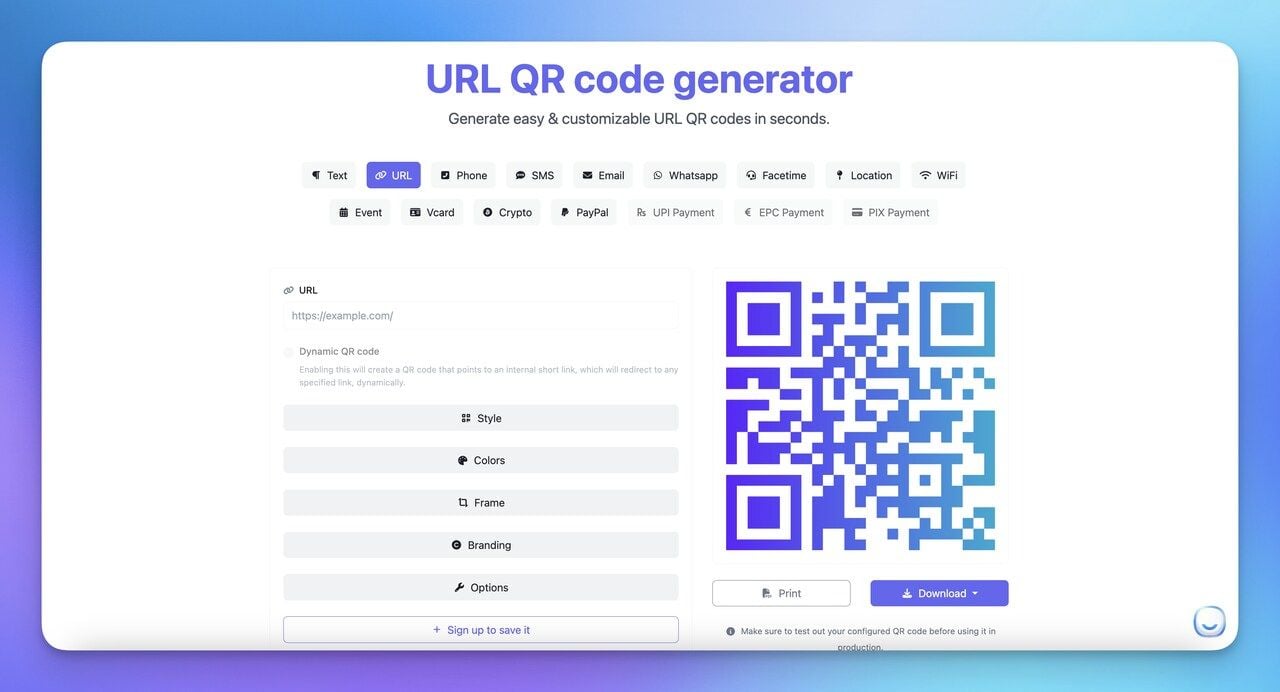
There are many options, from URL to text. You need to decide what type to remember.
Step 2- Let’s say you prefer a QR code for the URL. Create a digital memorial page where you can upload photos, videos, biographies, and other memories of the deceased.
This could be on a dedicated memorial website or a social media page. Ensure that the page is set up and that you have the URL ready to embed in the QR code. Paste the URL to the related field of the QR code.
Step 3- Personalize the QR code's design to reflect the deceased's spirit or blend with the headstone design. You can adjust foreground and background colors, the design of the QR code's eyes (the squares at three corners of the code), transparency levels, and add a logo or other meaningful iconography if relevant.
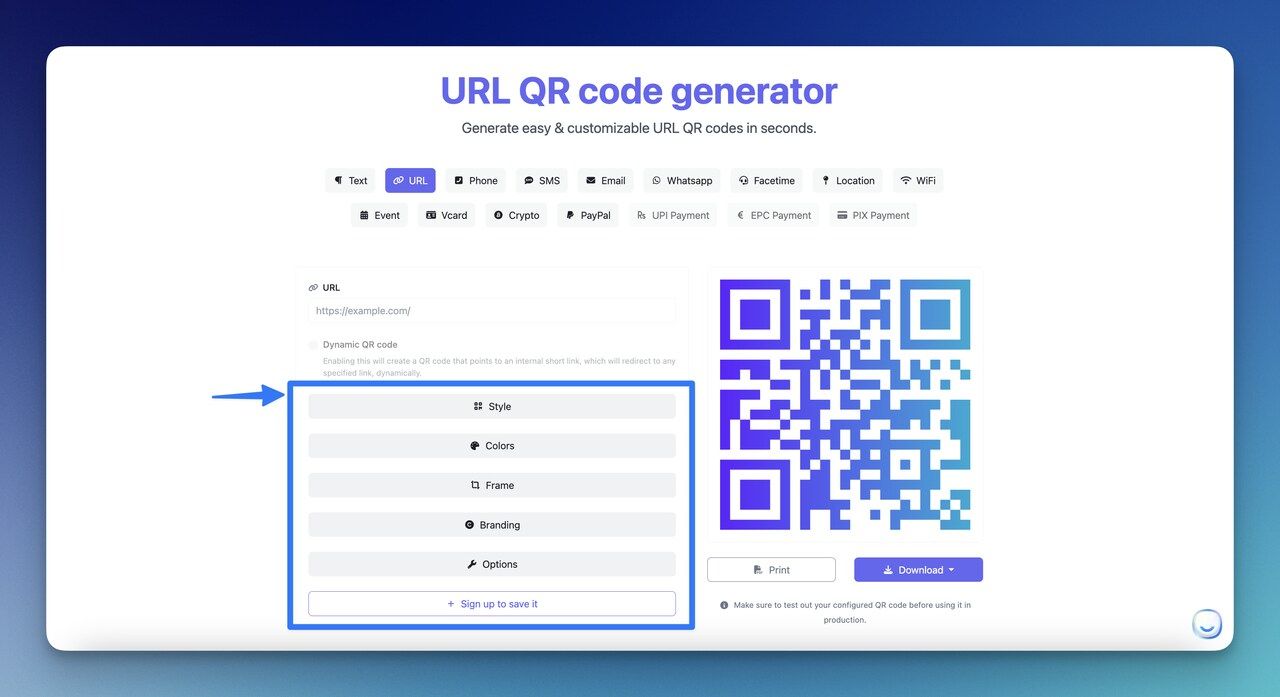
Step 4- Print or etch the QR code onto the chosen material professionally.
Once you have a QR code that works, decide on the material for the QR code plaque. It should be durable and withstand outdoor conditions like metal, ceramic, or weather-resistant plastic. Securely attach the QR code plaque to the headstone.
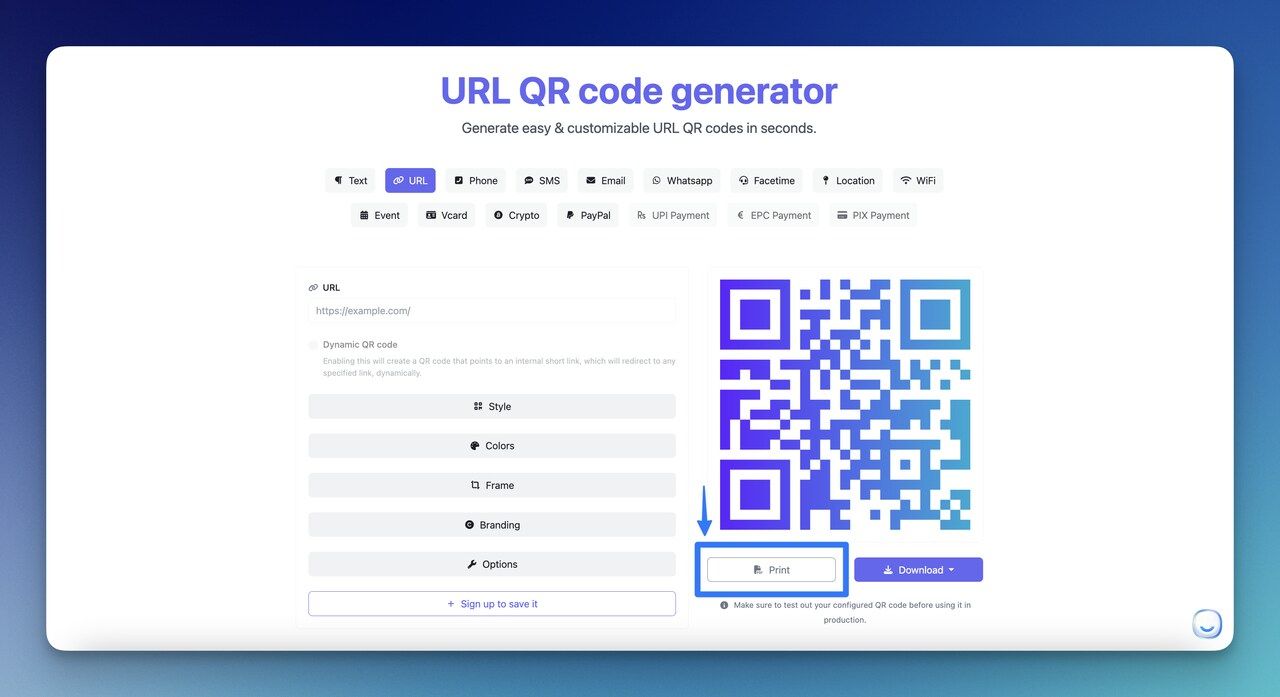
That’s the process! You shouldn’t forget to check and test if the QR code is working properly or not.
How QR Codes for Headstones Work
QR codes for headstones are an innovative way to link the physical memory of a loved one with digital remembrance.
Here’s a step-by-step explanation of how these QR codes function:
1. Creation and Linking: The process begins with the creation of a unique QR code. This code is typically generated by a service specializing in digital memorials. The QR code is programmed to link directly to a specific webpage that hosts the digital content about the deceased. This content can range from text and photos to videos and audio recordings.
2. Material Selection: To ensure longevity, the QR code is engraved or printed on a durable material such as granite, metal, or high-grade synthetic materials that are weather-resistant. This is crucial as the headstone QR code must withstand various outdoor elements like rain, snow, and sunlight.
3. Placement: The QR code is then securely attached to the headstone, monument, or memorial plaque. Placement is carefully considered to ensure that it is easily visible and accessible to visitors who may wish to scan it.
4. Scanning the QR Code: Visitors use their smartphone cameras to scan it. Most modern smartphones have QR code scanning capabilities within their camera apps. Once scanned, the phone redirects the visitor to the linked digital memorial page.
5. Interactive Memorial Experience: Upon accessing the webpage, visitors can view the personal history, photographs, and other digital memorials curated by the family. This can be a dynamic and interactive experience, allowing visitors to connect with the memories of the deceased in a unique and modern way.
6. Maintenance: The digital aspect of the QR code allows for the memorial to be updated or added to over time. Families can choose to add more photographs, stories, or even messages on special dates, keeping the memory of their loved ones alive and relevant.
QR codes for headstones offer a meaningful extension to traditional memorials by embracing technology to preserve and share the legacies of loved ones for generations to come.
Benefits of Using QR Codes for Graves
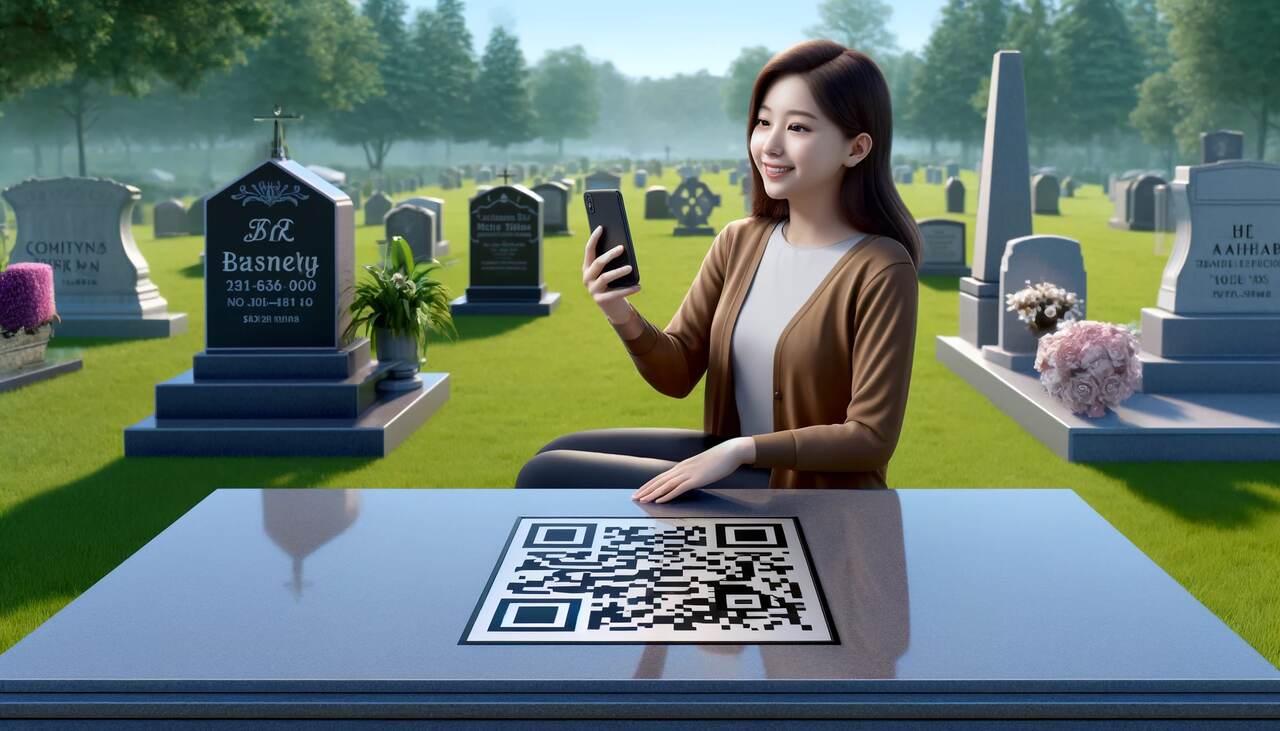
QR codes for graves offer several unique advantages that enhance the traditional ways of memorializing loved ones. Here are the primary benefits highlighted by users:
- Personalized Tributes: QR codes allow families to create a more personalized tribute than possible with text on a headstone. "With the QR code, I was able to add my grandmother's favorite songs and a gallery of her most cherished moments," shares Jessica, a user of QR codes for graves. This customization makes the memorial more meaningful and personal.
- Easy Access to Memories: Visitors can access the memories of the deceased instantly by scanning the QR code. "It feels like having a digital memory box that we can open anytime, right at the gravesite," mentions Tom, whose family used a QR code for their father's headstone.
- Durability and Maintenance: QR codes are created using weather-resistant and durable materials, ensuring longevity. "The QR code has held up beautifully over the years, just like the memories it holds," notes Karen, who appreciated the lasting quality of her mother's grave QR code.
- Interactive Engagement: Families and friends can interact with the content, leave messages, and share their own memories and stories. "It’s like an interactive guestbook that keeps growing with contributions from friends and family," explains Michael, whose family opted for a QR code for his brother's memorial.
- Keeping History Alive: QR codes help preserve the history and legacy of the deceased for future generations. "I love that my children and their children will be able to know their great-grandfather through this technology," says Emily, grateful for the historical preservation the QR code offers.
- Space Efficiency: QR codes allow for a significant amount of information to be shared without physical space limitations on the headstone. "We were able to include so much more about my husband’s life than the headstone could ever hold," reflects Lisa.
- Continuous Updates: The content linked to a QR code can be updated or added to over time without needing to alter the physical headstone. "Being able to add more photos and stories over the years keeps his memory fresh and current," observes David about his son's digital memorial.
The use of QR codes on graves is a testament to how technology can profoundly enrich how we remember and honor our loved ones, providing a dynamic and enduring connection to their lives and legacies.
Examples of Digital Headstones with QR Codes
1. The Story of John C.: Connecting Through Memories
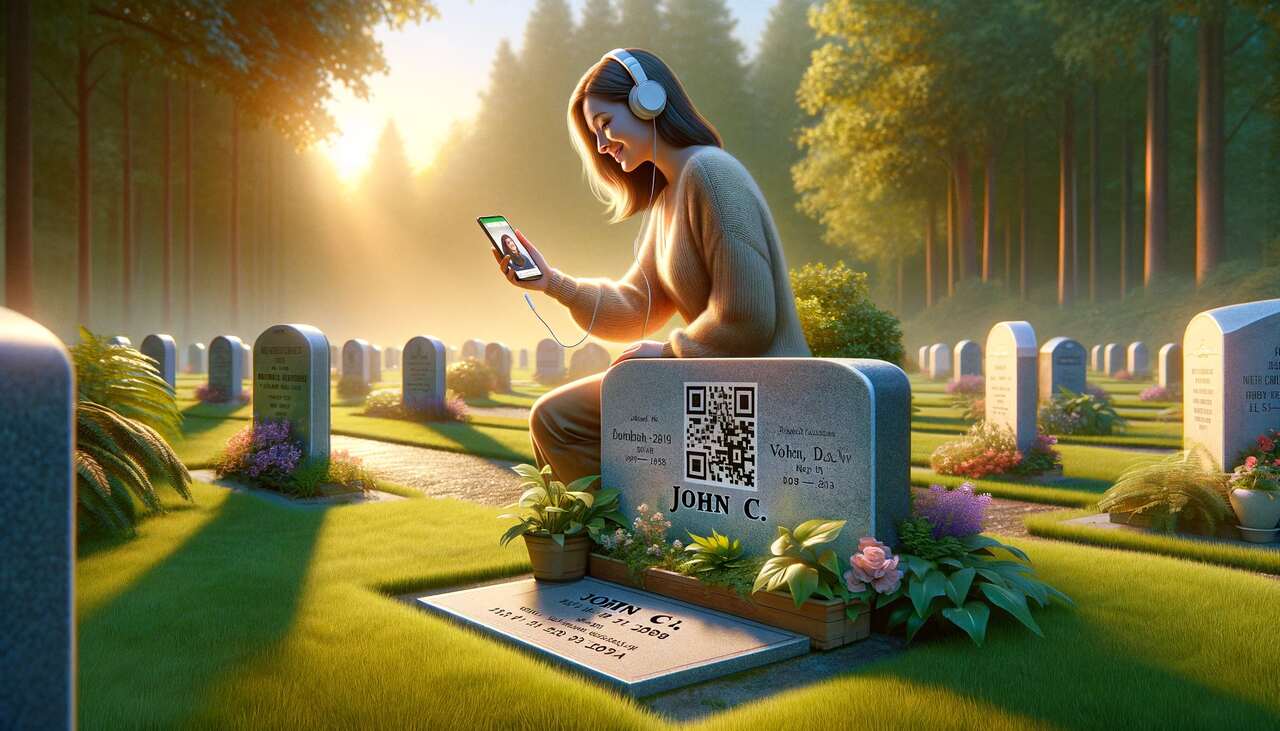
John C., a devoted father and husband, passed away in 2018. His daughter, Emily C., wanted to honor his memory in a unique way that captured his spirit and shared his life's story with friends and family.
She chose to add a QR code to his headstone, which links to a digital memorial page. This page features a collection of family photos, his favorite jazz music playlist, and video tributes from loved ones.
Visitors at the cemetery scan the QR code and are greeted with John’s warm smile and the music he loved, making each visit a deeply personal and comforting experience.
2. The Legacy of Maria G.: Preserving Cultural Heritage

Maria G. was a celebrated artist known for her vibrant paintings that reflected her Mexican heritage.
After her passing in 2021, her son, Roberto G., decided to use a QR code on her gravestone to celebrate her life's work. The QR code directs to a website showcasing a virtual gallery of her artwork, including some pieces displayed in national galleries.
The site also features biographical information and testimonials from fellow artists and curators, allowing visitors to understand and appreciate Maria's artistic journey and influence.
3. The Eternal Teacher: Harold’s Educational Impact
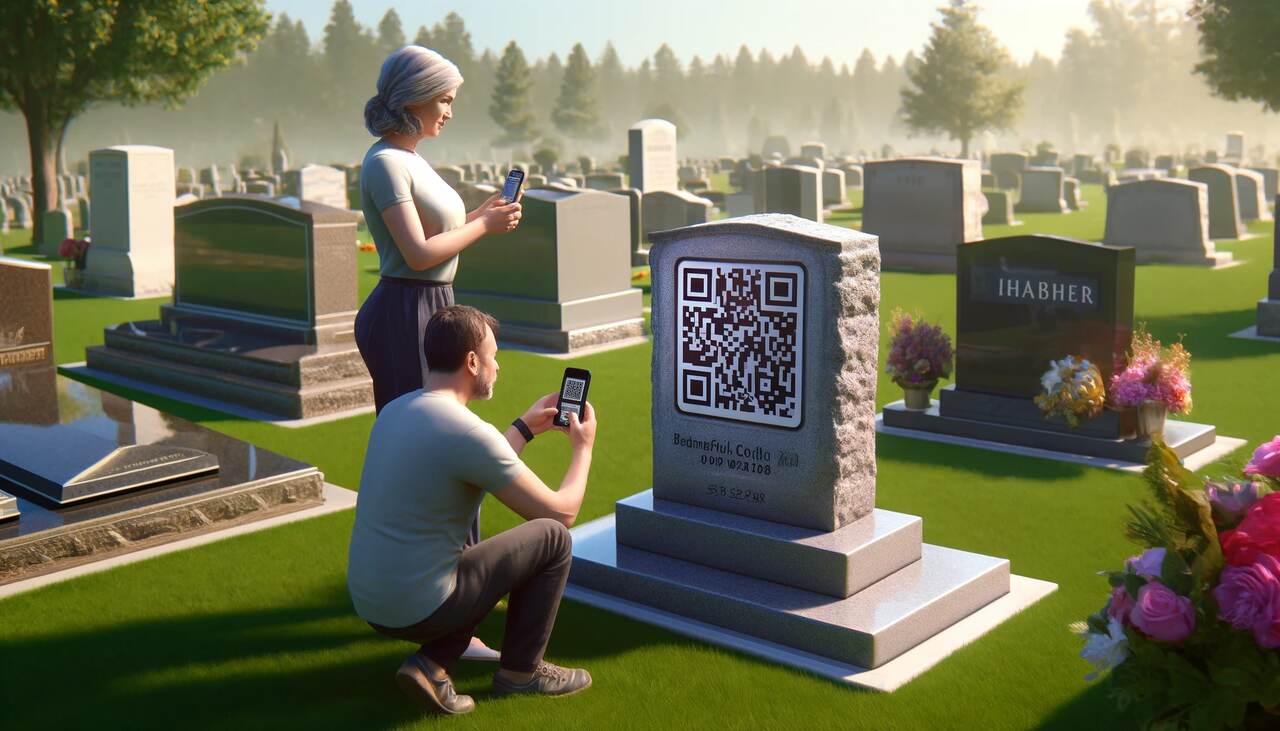
Harold S., a retired history teacher, had a passion for education that extended far beyond the classroom. When he passed away in 2020, his former students collaborated to create a digital tribute for him.
They placed a QR code on his headstone, which links to a digital archive of his teaching materials, lectures, and a forum where former students continue to share how his teachings impacted their lives.
Scanning the QR code brings Harold’s teachings to life and continues his legacy of education, inspiring even those who have never met him.
These stories illustrate how QR codes on headstones can transform traditional memorials into living tributes, enabling loved ones to preserve and share the rich, personal histories of those who have passed. Each QR code offers a gateway to a unique legacy, making every visit to the gravesite a profound and interactive experience.
* In this section, the illustrative images are chosen on purpose to respect the private lives of the story owners who share them with us.
QR Code Gravestone Design Considerations
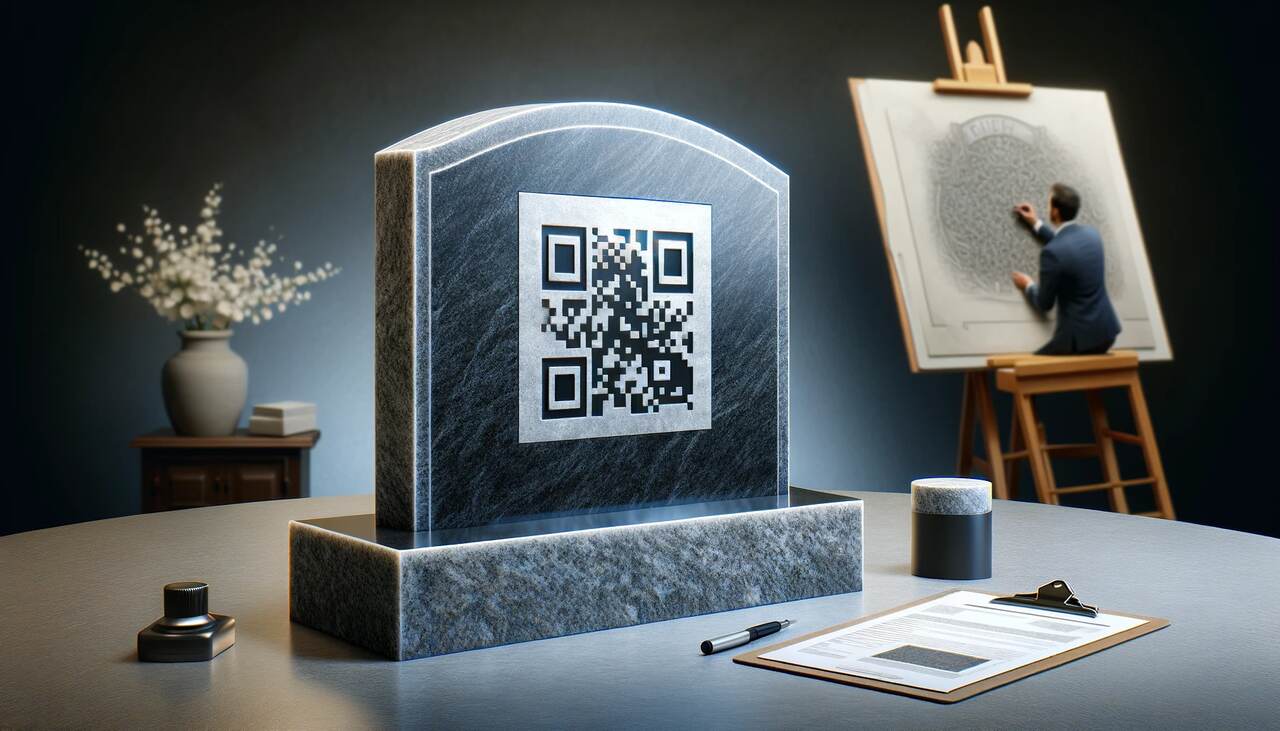
Thoughtful design and careful planning are essential to create a meaningful and enduring memorial. Here are several important design considerations to keep in mind:
- Material Compatibility: The material used for the QR code must be compatible with outdoor conditions and match the gravestone's durability and aesthetics. Common materials include laser-etched metal, ceramic, or granite plaques that withstand weather elements like rain, snow, and sunlight.
- Visibility and Accessibility: The QR code should be placed where it is easily visible and accessible for scanning. It should not be too high or too low on the gravestone; ideally, it should be at a comfortable height for an average person to scan without stooping or reaching.
- Size and Scanning Distance: The size of the QR code is crucial for usability. It must be large enough to be easily scanned by a smartphone from a standard distance of about one to two feet. This ensures that visitors won't struggle to interact with the digital memorial. Plus, you can decide on the shape of the QR code.
- Integration with Gravestone Design: The QR code should complement, not detract from, the overall design of the gravestone. It should blend seamlessly with the artistic elements and text already present, maintaining the dignity and solemnity appropriate for a gravestone.
- Security and Privacy: Consider the security and privacy of the information accessible through the QR code. It is important to ensure that the digital content is respectful and secure, potentially offering options for privacy settings that control who can view or interact with the memorial page.
- Longevity of Content Hosting: The service hosting the digital content linked to the QR code should be reliable and committed to long-term service. Families should verify that the company offers ongoing support and guarantees that the data will be maintained for many years, ideally in perpetuity.
- Future-proofing: Technology changes rapidly, and it is important to consider how future changes might affect the accessibility of the QR code content. Choosing a provider that stays updated with the latest technology and offers solutions for future compatibility is essential.
- Legal and Cemetery Regulations: Before adding a QR code to a gravestone, check the regulations of the cemetery or memorial park. Some locations may have restrictions on the type of additions allowed on gravestones, including the use of QR codes.
By addressing these considerations, families can ensure that QR code gravestones serve as a fitting and lasting tribute, effectively bridging the gap between traditional memorials and digital commemorations.
Privacy and Security Considerations for QR Codes on Graves
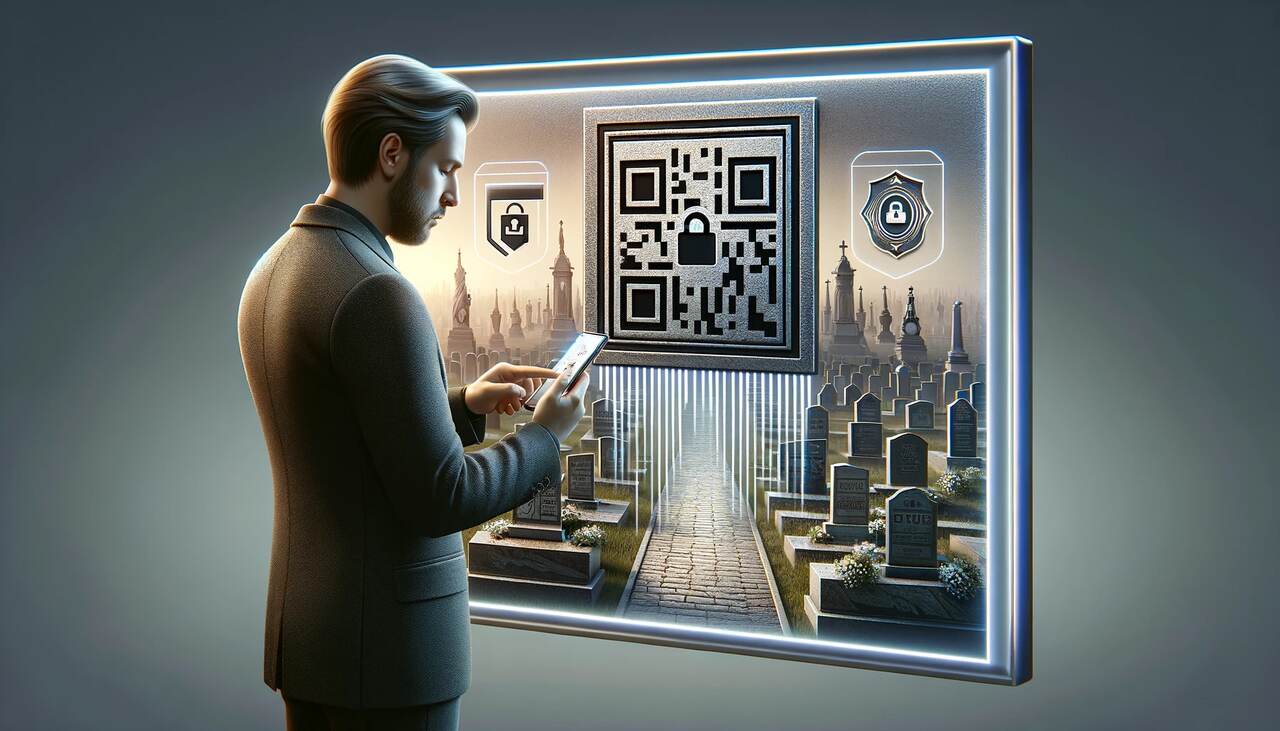
When integrating QR codes into gravestones, ensuring the privacy and security of the information they link to is crucial. Here are some essential tips to safeguard digital memorials:
🔒 Choose Secure Hosting: Ensure that the digital content linked by the QR code is hosted on a secure platform. Look for SSL encryption services to protect data transmission from the QR code to the website.
👤 Privacy Settings Management: Opt for platforms that allow you to manage privacy settings. This can include options to make the memorial page private, accessible only via a password, or visible only to certain users.
🛡️ Regular Updates: Like any other software, the platform hosting the QR content should receive regular updates to secure any vulnerabilities and protect against new threats.
📅 Long-Term Service Assurance: Verify that the hosting service has a robust policy for long-term data maintenance. Check if they offer guarantees about how long the data will be stored and what happens if the company changes hands or goes out of business.
🔄 Backup Options: Regularly back up the digital content linked to the QR code. If the original hosting service fails, having a backup will ensure the memorial remains accessible.
👀 Limit Sensitive Information: Be cautious about the amount of personal information shared on the digital memorial page. Avoid posting sensitive personal data that could be misused if accessed by unintended parties.
🔗 Secure Access Methods: Consider implementing additional layers of security, such as two-factor authentication, to access the memorial page's administrative controls. That's why you can check the safety of the QR code.
🚨 Regular Monitoring: If possible, keep an eye on the QR code's usage and access logs. Monitoring can help you detect any unauthorized access or suspicious activity early.
⚖️ Compliance with Regulations: Ensure that the QR code and its linked content comply with data protection laws and regulations, such as GDPR in Europe, which govern the handling of personal information.
Conclusion
By converging the digital and physical worlds, these codes offer a unique window into the lives of the deceased, serving as a dynamic, interactive memorial.
As we merge our physical and virtual realms, it becomes evident that our digital footprints don’t end where traditionally thought.
The integration of QR codes into headstones not only preserves memory but also reshapes the way we connect, share, and remember our loved ones.
Frequently Asked Questions
Is it respectful to use a QR Code on a gravestone?
This is subjective and depends on personal preferences, cultural practices, and beliefs. A QR Code can provide a way for visitors to know more about the deceased's life and achievements, turning a visit to the gravesite into a more personal and interactive experience.
Can the QR code wear off the gravestone over time?
If the QR code is made from durable, weatherproof material, it's designed to withstand harsh outdoor conditions for extended periods. However, like all materials exposed to the elements, it may wear over time. Regular maintenance can help ensure longevity.
Can multiple QR codes be placed on a single gravestone?
Technically, yes. However, it's crucial to consider the aesthetic aspect and informational clarity to avoid causing confusion for visitors scanning the code.
Visit our other blog posts:


